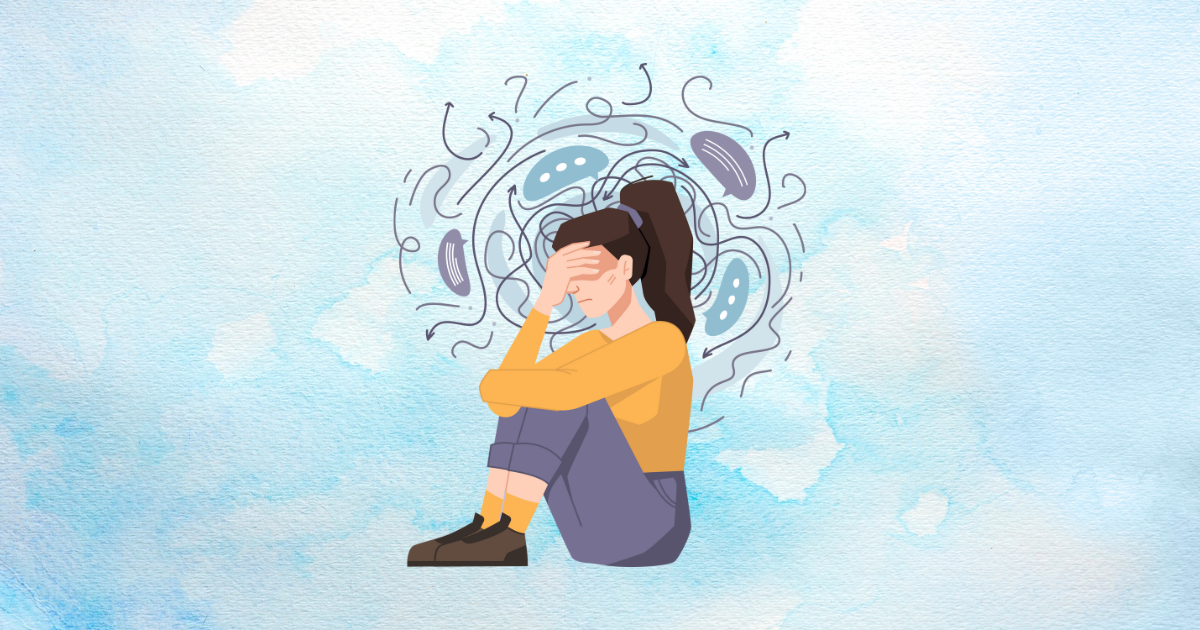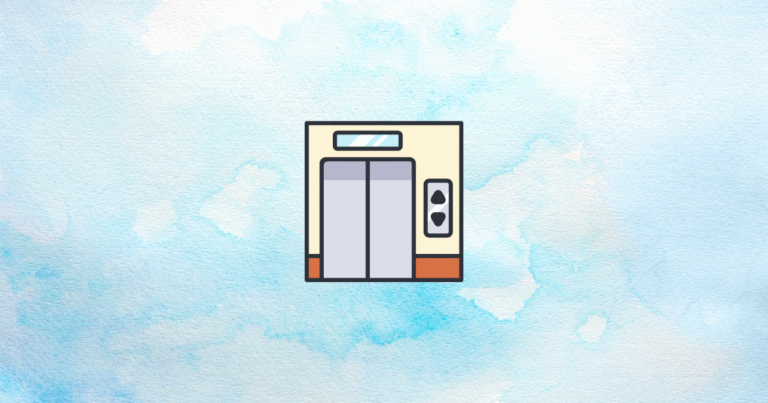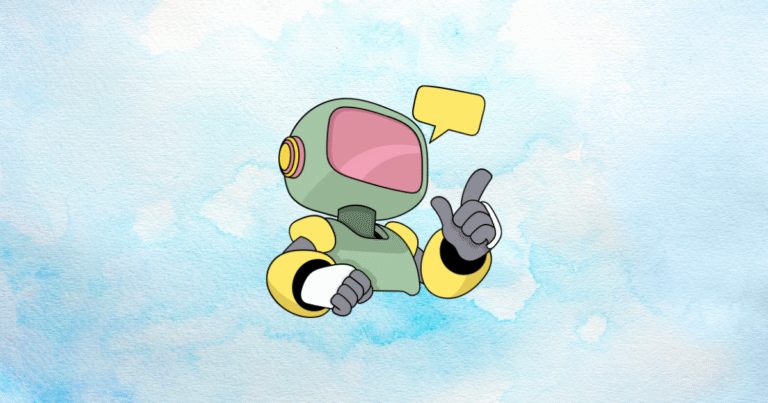Have you ever hesitated before hitting that “Buy Now” button? Or felt your heart race a little when making a big purchase? Maybe you’ve abandoned a shopping cart because something just didn’t feel right?
You’re not alone. Purchase anxiety affects 55% of shoppers, leading them to abandon purchases due to lack of confidence.
Understanding the anxiety-relief cycle in shopping isn’t just interesting psychology—it’s the key to better business results and happier customers. Whether you’re a business owner looking to improve conversions or a curious consumer wanting to understand your own shopping behaviors, this article will transform how you think about purchase decisions.
After reading this article, you’ll understand:
- Why we feel anxious when making purchase decisions
- How our brains process shopping anxiety and seek relief
- The different types of purchase anxiety and what triggers them
- Practical strategies to reduce anxiety in the shopping experience
Ready to unlock the psychology behind shopping decisions? Let’s dive in!
Introduction to the Anxiety-Relief Cycle in Consumer Behavior
When we talk about the anxiety-relief cycle in shopping, we’re describing a pattern that affects nearly all consumers at some point. In this section, we’ll explore what this cycle is, why it matters, and how understanding it can transform business results.
What Is the Anxiety-Relief Cycle?
The anxiety-relief cycle is a pattern where feelings of uncertainty or worry trigger either avoidance behaviors (like abandoning a purchase) or quick decisions to relieve the uncomfortable feeling. After making a choice, we experience temporary relief, which reinforces the behavior pattern for future situations.
Think about the last time you made a significant purchase. You might have experienced:
- Worry about making the wrong choice
- Concern about spending too much money
- Uncertainty about the product’s quality or performance
- Relief and satisfaction after finally deciding
This cycle isn’t just an interesting psychological curiosity—it has real economic impact. With more than half of shoppers abandoning purchases due to anxiety-related lack of confidence, businesses that understand and address this cycle gain a significant competitive advantage.
How Our Understanding Has Evolved
The study of consumer anxiety has come a long way. What started as general research about anxiety has developed into specific applications for shopping and purchase decisions. Researchers have shifted from seeing consumers as purely rational decision-makers to understanding the powerful emotional influences that drive our choices.
This evolution is especially relevant in today’s digital commerce environment, where consumers face new types of purchase anxiety related to online shopping, mobile payments, and virtual product experiences.
Why Businesses Should Care
For business owners and marketers, understanding the anxiety-relief cycle is not just interesting—it’s essential for:
- Improving conversion rates and reducing cart abandonment
- Increasing customer lifetime value through better experiences
- Gaining competitive advantage by addressing emotional barriers
- Reducing the significant costs of unmanaged consumer anxiety
Now that we understand what the anxiety-relief cycle is and why it matters, let’s explore the fascinating psychological mechanisms that drive this pattern. What’s really happening in our brains when we feel shopping anxiety? The answer might surprise you…
Psychological Foundations of the Anxiety-Relief Cycle
To truly understand shopping anxiety, we need to look under the hood at the psychological and neurological processes driving our behaviors. In this section, we’ll break down the science in simple terms.
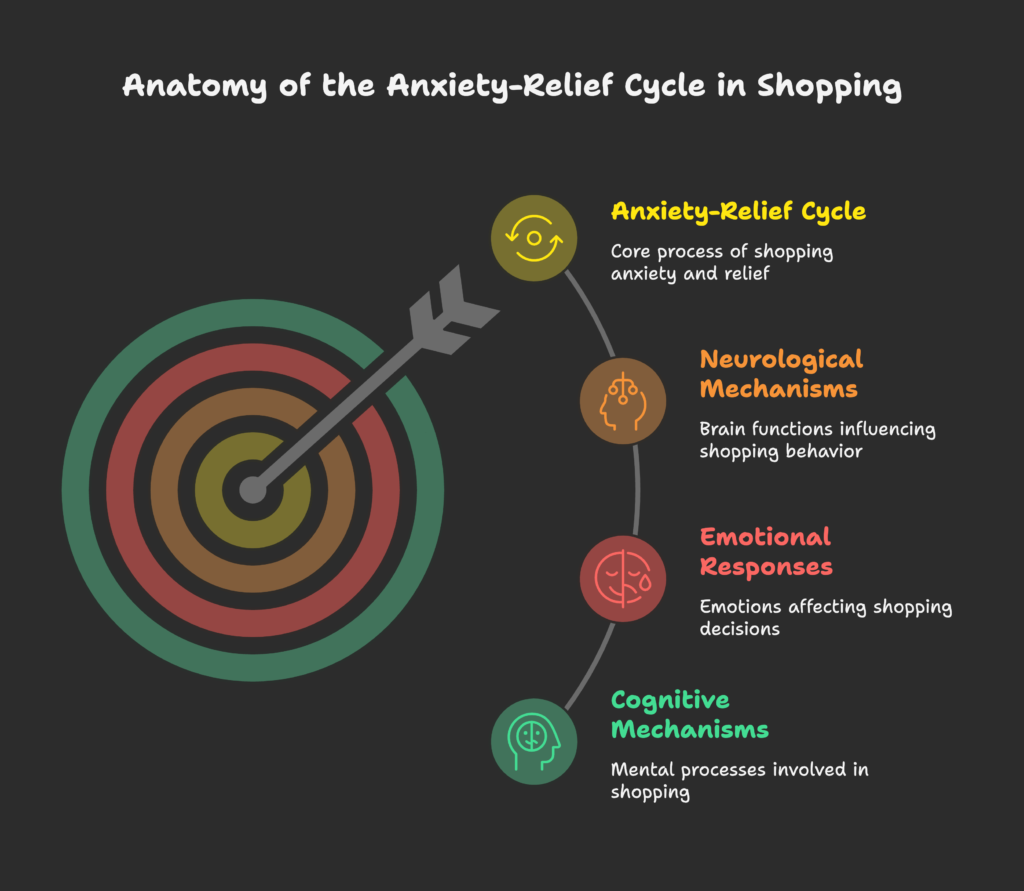
How Our Minds Process Shopping Decisions
Our brains have evolved to avoid uncertainty whenever possible. When we shop, several cognitive mechanisms activate:
- Uncertainty avoidance: We naturally try to minimize ambiguity and unknown outcomes
- Risk evaluation: We constantly assess the potential downsides of our choices
- Decision fatigue: The more choices we make, the more mentally tired we become
- Mental shortcuts: When anxious, we rely on quick, sometimes flawed decision methods
These processes aren’t flaws—they’re features of our decision-making system designed to protect us. But in modern shopping environments with countless options and information overload, these mechanisms can sometimes work against us.
The Emotional Side of Shopping
Shopping isn’t just logical—it’s deeply emotional. When we experience purchase anxiety:
- We feel anticipatory emotions about potential outcomes
- Our brain’s reward circuitry activates as we seek relief from uncertainty
- We worry about future regret (“Will I wish I bought something else?”)
- We’re influenced by the emotions of others (like through reviews or recommendations)
These emotional responses can be more powerful than logical considerations, which is why even when we know a purchase makes sense, we might still hesitate if it doesn’t “feel right.”
What’s Happening in Your Brain
Neuroscience has revealed fascinating insights about purchase anxiety:
- The amygdala (our brain’s alarm system) activates when we perceive risk in a purchase
- Dopamine releases not just when we buy something, but in anticipation of the reward
- Different brain structures process immediate rewards versus long-term considerations
- Some people’s brains are naturally more sensitive to anxiety triggers
Understanding these brain mechanisms helps explain why the anxiety-relief cycle can be so powerful. Even the most logical shopper is influenced by these neurological processes.
Now that we understand the psychological and neurological foundations, let’s examine exactly how this cycle plays out in real shopping situations. What are the specific stages, and what happens at each point? Let’s break down the anatomy of the anxiety-relief cycle…
The Anatomy of the Anxiety-Relief Cycle in Purchase Contexts
The anxiety-relief cycle follows a predictable pattern with distinct phases. By understanding each stage, we can identify opportunities to improve the shopping experience. Let’s walk through the complete cycle step by step.
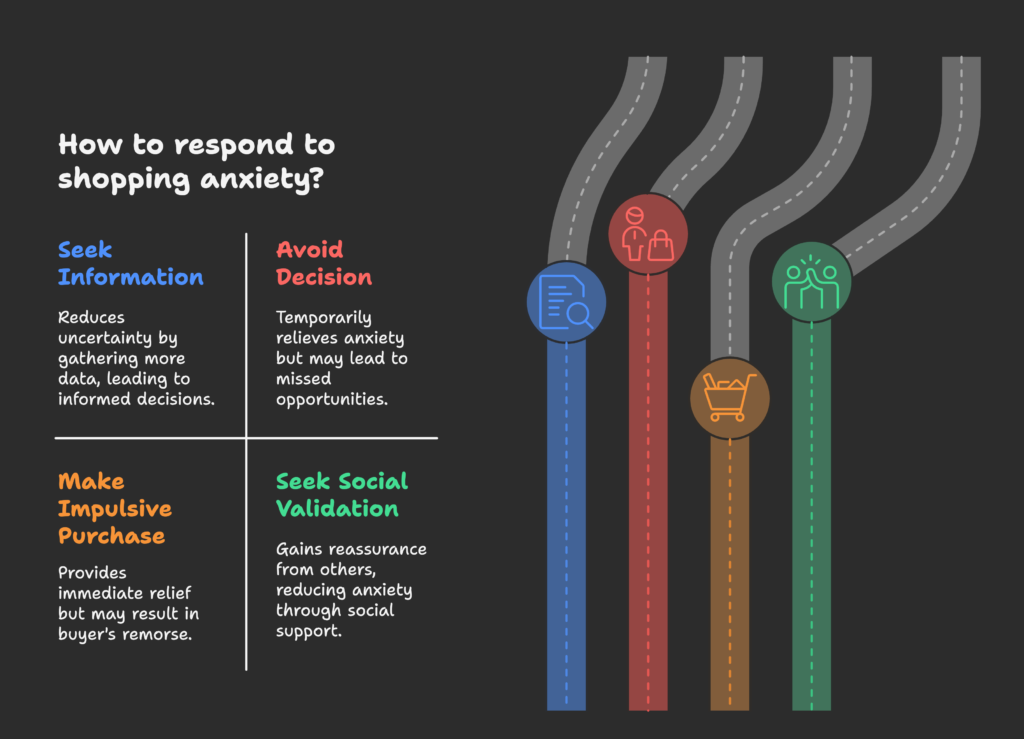
Phase 1: When Anxiety Triggers Appear
The cycle begins when something triggers anxiety during the shopping process. Common triggers include:
- Product factors: High price, complex features, unfamiliar brands
- Situational factors: Time pressure, shopping in public, being watched
- Personal factors: Past negative experiences, financial concerns
These triggers vary by individual—what causes one person anxiety might not affect another. For example, a tech enthusiast might feel confident buying advanced electronics but anxious when purchasing fashion items.
Phase 2: How We Respond to Shopping Anxiety
Once anxiety is triggered, consumers typically respond in one of several ways:
- Approach responses: Seeking more information, reading additional reviews, asking friends
- Avoidance responses: Postponing the decision, abandoning carts, leaving stores
- Compensatory behaviors: Making impulsive decisions, seeking social validation
These responses can manifest physically (increased heart rate, sweaty palms) and emotionally (stress, irritability). Many consumers aren’t even consciously aware of their anxiety response—they just know something doesn’t feel right about the purchase.
Phase 3: Seeking Relief Through Action
To resolve uncomfortable anxiety feelings, consumers seek relief through:
- Finally making the purchase decision (either yes or no)
- Getting validation from others about their decision
- Finding social proof (reviews, testimonials, recommendations)
- Using risk-reduction strategies (warranties, return policies)
The relief that comes from resolving uncertainty is actually neurologically rewarding—our brains release feel-good chemicals when we eliminate ambiguity, even if we decide not to buy.
Phase 4: How the Cycle Reinforces Itself
The temporary relief we feel after resolving purchase anxiety reinforces our behavior pattern:
- If avoiding a purchase relieved anxiety, we’re more likely to avoid similar purchases in the future
- If buying quickly relieved anxiety, we might develop impulse buying habits
- If seeking information worked, we’ll likely become research-intensive shoppers
This reinforcement creates habitual responses to shopping anxiety that can last for years, affecting countless purchase decisions.
Now that we understand how the anxiety-relief cycle unfolds, let’s explore the different types of purchase anxiety consumers experience. Are you curious which type affects you most? Let’s find out by examining the main categories of shopping anxiety…
Types of Purchase Anxiety
Not all shopping anxiety is the same. In this section, we’ll explore the four main types of purchase anxiety, helping you identify which ones might be affecting your customers—or yourself.
Information-Related Anxiety: Too Much or Too Little?
Many purchase decisions are complicated by information problems:
- Information overload: Too many options, features, and specifications causing decision paralysis
- Information gaps: Missing critical details needed to make an informed choice
- Conflicting information: Contradictory reviews or advice creating confusion
- Trust issues: Uncertainty about the reliability of available information
Have you ever spent hours comparing product specifications only to feel more confused than when you started? That’s information anxiety at work.
Financial Anxiety: Is It Worth the Money?
Money concerns are among the most common sources of purchase anxiety:
- Value uncertainty: Questioning if the product is worth its price
- Budget pressure: Worry about affording the purchase
- Opportunity cost: Concern about what else the money could be used for
- Long-term implications: Anxiety about future financial impact
Financial anxiety can affect anyone, regardless of income level. Even wealthy consumers experience value-based anxiety when making significant purchases.
Social Anxiety: What Will Others Think?
Many purchases have social dimensions that trigger anxiety:
- Fear of missing out (FOMO): Anxiety about not having what others have
- Status concerns: Worry about how purchases reflect social standing
- Group pressure: Anxiety about fitting in with peers through purchases
- Identity confirmation: Concern about whether purchases align with self-image
Social media has significantly amplified social purchase anxiety, as consumers now constantly see the purchases and experiences of others in their networks.
Performance Anxiety: Will It Work as Expected?
Uncertainty about product performance creates significant anxiety:
- Suitability concerns: Will this meet my specific needs?
- Functionality doubts: Will it work properly?
- Quality uncertainty: How long will it last?
- Expectation gaps: Will reality match what’s promised?
Performance anxiety is especially common with technical products, services, and expensive items where the stakes of failure are high.
Understanding these different types of anxiety helps businesses target their solutions more effectively. But what factors influence how strongly these anxieties affect different consumers? Let’s explore the variables that determine anxiety sensitivity in the shopping experience…
Factors Influencing the Anxiety-Relief Cycle
The intensity of purchase anxiety varies widely between different people and situations. In this section, we’ll explore the key factors that determine how strongly the anxiety-relief cycle affects purchasing decisions.
Product Characteristics That Trigger Anxiety
Some products naturally create more anxiety than others:
- Complexity level: Technical products with many features create more anxiety
- Price point: Higher costs generally increase purchase anxiety
- Social visibility: Products used or seen publicly create more social anxiety
- Category risk: Some categories (health, financial) naturally create more concern
For example, buying a smartphone typically creates more anxiety than buying a phone case, due to the significant difference in complexity, cost, and commitment.
Individual Differences: Why We Don’t All Shop the Same Way
Personal characteristics significantly influence anxiety sensitivity:
- Risk tolerance: Some people naturally handle uncertainty better than others
- Prior experience: Familiarity with a product category reduces anxiety
- Self-confidence: General decision-making confidence affects purchase anxiety
- Anxiety sensitivity: Some people are physiologically more reactive to anxiety triggers
These individual differences explain why the same shopping situation can be stressful for one person and enjoyable for another.
Contextual Factors: When and Where Matters
The shopping environment and circumstances play a major role:
- Time pressure: Having to decide quickly amplifies anxiety
- Social setting: Shopping with others versus alone changes anxiety levels
- Physical versus digital: Different environments trigger different types of anxiety
- Cultural context: Social norms and expectations influence anxiety patterns
Even the time of day can matter—many consumers report higher anxiety when shopping while tired or hungry.
Channel-Specific Triggers: Online vs. In-Store Differences
Different shopping channels create unique anxiety triggers:
- Digital uncertainties: Online shoppers worry about security, accurate representation, and delivery
- In-store social pressure: Physical stores can create anxiety about interacting with staff
- Cross-channel confusion: Switching between online research and in-store shopping creates its own anxiety
- Mobile-specific concerns: Small screens and interrupted shopping sessions increase stress
Understanding these channel differences is particularly important for businesses with omnichannel presences.
Now that we understand what affects purchase anxiety, you might be wondering: is there actual evidence that this cycle matters? Let’s look at the research findings that prove the real-world impact of the anxiety-relief cycle on shopping behavior…
Empirical Evidence of the Anxiety-Relief Cycle
Is the anxiety-relief cycle just an interesting theory, or does research support its existence? In this section, we’ll explore the scientific evidence behind this psychological pattern in shopping behavior.
What Laboratory Studies Tell Us
Controlled experimental research has revealed important insights:
- Studies where purchase anxiety is artificially induced show measurable effects on decision-making
- A/B testing on e-commerce platforms demonstrates how anxiety-reducing elements improve conversion rates
- Eye-tracking studies reveal how anxious consumers scan pages differently, focusing on reassuring elements
- Physiological measurements (heart rate, skin conductance) confirm the physical reality of purchase anxiety
These controlled studies allow researchers to isolate specific anxiety factors and measure their precise effects on purchase behavior.
Real-World Evidence and Field Studies
Outside the laboratory, real-world evidence is equally compelling:
- Retail environment observations show behavioral patterns consistent with anxiety responses
- Digital analytics reveal how anxiety manifests in browsing patterns, hesitation points, and abandonment
- Survey research confirms consumers’ subjective experiences of purchase anxiety
- Longitudinal studies track how anxiety-driven behaviors develop and change over time
These field studies validate that laboratory findings apply to actual shopping situations.
What the Combined Research Tells Us
When we look across all studies on purchase anxiety:
- The evidence consistently supports the existence and importance of the anxiety-relief cycle
- Effect sizes suggest moderate to strong impacts on purchase decisions
- Several key moderating variables (like product type and individual differences) consistently emerge
- The practical significance is clear: managing consumer anxiety has meaningful business outcomes
This body of evidence moves the anxiety-relief cycle from theoretical concept to proven phenomenon that deserves serious attention from businesses.
With the evidence firmly established, let’s explore how these patterns play out in specific industries. How does the anxiety-relief cycle affect different types of businesses? The answers might surprise you…
Industry-Specific Applications and Case Studies
The anxiety-relief cycle manifests differently across various industries. In this section, we’ll explore how purchase anxiety affects specific business sectors and examine some revealing case studies.
E-commerce and Digital Shopping: The Virtual Anxiety Experience
Online shopping creates unique anxiety patterns:
- Smartphone anxiety leads to more impulsive purchases to relieve uncertainty quickly
- Payment process anxiety is a major source of cart abandonment
- Trust development is critical but challenging in digital environments
Case Study: Online Fresh Food Shopping
Research shows that first-time online grocery shoppers experience significant anxiety about product freshness and quality. Companies that address this through detailed images, freshness guarantees, and transparent quality standards see up to 32% higher conversion rates among new customers.
Retail and Physical Shopping Environments
In-store shopping creates different anxiety patterns:
- Strategic store layouts can either increase or decrease shopper anxiety
- Staff interactions significantly influence anxiety management
- Environmental factors (lighting, space, privacy) affect anxiety levels
Interestingly, research comparing online and in-store shopping shows that anxiety manifests differently—not necessarily more or less—in each environment, challenging the assumption that one channel is inherently more anxiety-inducing than the other.
High-Consideration Purchase Categories
Some product categories naturally create more anxiety:
- Luxury goods trigger status-related anxiety and concerns about authenticity
- Technical products create anxiety about usefulness and the consumer’s own competence
- Service purchases involve unique anxiety about intangible outcomes
Case Study: Travel Purchase Anxiety
Travel bookings show clear anxiety patterns, with 78% of consumers visiting multiple sites before booking. Companies that implement progressive confidence-building elements (like virtual tours, detailed itineraries, and flexible cancellation policies) report 23% higher completion rates.
Fast-Moving Consumer Goods
Even everyday purchases involve anxiety:
- Low-cost but high-frequency purchases create cumulative anxiety effects
- Brand loyalty often develops as an anxiety-reduction strategy
- Grocery shopping specifically shows clear decision fatigue patterns
Case Study: Panic Buying During Uncertainty
The pandemic demonstrated how uncertainty triggers anxiety-driven purchasing. Retailers that implemented quantity limits, clear availability information, and reassuring messaging were able to reduce panic buying behaviors by up to 45%.
Now that we’ve seen how the anxiety-relief cycle affects different industries, let’s move to the most practical question: how can businesses and consumers break this cycle? What concrete strategies can reduce purchase anxiety? Let’s find out…
Breaking the Anxiety-Relief Cycle: Intervention Strategies
Understanding purchase anxiety is valuable, but knowing how to address it is essential. In this section, we’ll explore practical strategies for businesses to reduce consumer anxiety and create more positive shopping experiences.
Smart Information Strategies: The Right Info at the Right Time
How information is presented significantly impacts anxiety:
- Information architecture: Organizing details in a logical, easily digestible way
- Social proof implementation: Strategically placing reviews and ratings where anxiety peaks
- Expert recommendation systems: Providing guidance from trusted authorities
- Technical specification presentation: Making complex information accessible
The key is not just providing information, but delivering it in the right format, amount, and moment to address specific anxiety triggers.
Support and Engagement: The Human Touch
Personal connection remains powerful for anxiety reduction:
- Strategic human interaction: Offering help at key anxiety points
- AI and chatbot assistance: Providing immediate answers to anxiety-producing questions
- Community support: Facilitating peer-to-peer reassurance
- Post-purchase support: Continuing reassurance after the sale
Research shows that even brief human (or humanlike) interaction can significantly reduce purchase anxiety, especially for complex or high-value products.
Building Trust: The Anxiety Antidote
Trust is the most effective anxiety reducer:
- Consistency across touchpoints: Ensuring a reliable experience everywhere
- Transparency in policies: Making terms clear and understandable
- Reputation management: Actively building and highlighting positive associations
- Guarantees and warranties: Reducing perceived risk through assurances
The more a business can establish trust, the less anxiety consumers will experience during the purchase process.
Anxiety-Aware Design: Creating Calming Experiences
The shopping experience itself can reduce anxiety:
- Simplified decision pathways: Reducing complexity at choice points
- Progressive disclosure: Revealing information gradually to prevent overwhelm
- Anxiety-sensitive interfaces: Designing with emotional state in mind
- Mobile-specific considerations: Adapting for the unique context of smartphone shopping
These design approaches work best when informed by actual user testing that identifies specific anxiety points in the customer journey.
Breaking the anxiety-relief cycle requires a systematic approach. But how do you know if your interventions are working? Let’s explore how to measure and assess purchase anxiety to evaluate the effectiveness of your strategies…
Measurement and Assessment Methodologies
To effectively manage purchase anxiety, businesses need reliable ways to measure it. This section covers practical approaches to identifying and quantifying anxiety in the shopping experience.
Quantitative Measurement: The Numbers Behind the Feeling
Several approaches can quantify purchase anxiety:
- Validated anxiety scales: Standardized questionnaires adapted for shopping contexts
- Behavioral indicators: Measurable actions that suggest anxiety (hesitation time, page views, etc.)
- Digital analytics: Web metrics that correlate with anxiety states
- Experimental designs: Controlled tests that isolate anxiety effects
These quantitative measures help businesses identify specific anxiety patterns and track improvements over time.
Qualitative Assessment: Understanding the Experience
Numbers alone don’t tell the full story of anxiety:
- Interview protocols: Structured conversations to explore anxiety experiences
- Observational frameworks: Systematic watching for anxiety indicators
- Customer journey mapping: Identifying emotional states at each touchpoint
- Think-aloud protocols: Having consumers verbalize during the shopping process
These approaches provide rich insights into the subjective experience of purchase anxiety, revealing nuances that quantitative measures might miss.
Integrated Measurement Approaches
The most effective assessment combines multiple methods:
- Physiological + self-report: Combining objective and subjective measures
- Longitudinal assessment: Tracking anxiety patterns over time
- Real-time + retrospective: Capturing both immediate and reflective perspectives
- Laboratory + field studies: Balancing control with real-world validity
This integrated approach provides the most complete picture of purchase anxiety, helping businesses identify both obvious and subtle opportunities for improvement.
As we’ve explored the current understanding of purchase anxiety, you might wonder: what’s next? How will emerging technologies and societal changes affect the anxiety-relief cycle? Let’s look at the future of purchase anxiety research and practice…
Future Research Directions
The study of purchase anxiety continues to evolve. In this section, we’ll explore emerging areas of research and future directions that will shape our understanding of the anxiety-relief cycle.
Emerging Technologies: New Anxiety Frontiers
Technology is creating novel purchase anxiety patterns:
- Voice commerce introduces unique uncertainty without visual confirmation
- Augmented reality shopping creates new questions about virtual representation accuracy
- AI recommendation systems raise concerns about autonomy and manipulation
- Biometric payments trigger privacy and security anxieties
Research into these emerging technologies will help businesses anticipate and address new forms of purchase anxiety before they become barriers to adoption.
Global and Cultural Perspectives
Purchase anxiety varies significantly across cultures:
- Different societies show distinct anxiety patterns and triggers
- Emerging markets demonstrate unique anxiety factors compared to developed markets
- Global businesses face questions about standardization versus localization of anxiety management
- Cross-border commerce creates specific anxiety related to international transactions
Understanding these cultural variations will become increasingly important in a global marketplace.
Theoretical Development Needs
Several theoretical areas require further exploration:
- More comprehensive models integrating all aspects of the anxiety-relief cycle
- Deeper neurological investigation of purchase anxiety mechanisms
- Better understanding of long-term effects from anxiety-based purchasing patterns
- Interdisciplinary research combining psychology, economics, neuroscience, and design
These theoretical advances will provide the foundation for more effective practical applications.
The future of purchase anxiety research promises exciting developments. But what does all this mean for businesses today? Let’s explore the practical implications and recommendations for applying this knowledge right now…
Practical Implications and Recommendations
How can businesses apply anxiety-relief cycle insights today? This section offers concrete recommendations for implementing anxiety-aware strategies in your business.
Strategy Development: Creating an Anxiety-Aware Business
Begin with a systematic approach to anxiety management:
- Conduct an anxiety audit: Identify specific anxiety points in your customer journey
- Develop an anxiety management strategy: Create a comprehensive plan addressing key triggers
- Implement cross-functional solutions: Involve marketing, design, customer service, and product teams
- Measure ROI: Track business outcomes from anxiety reduction initiatives
This structured approach ensures anxiety management becomes a strategic priority rather than an afterthought.
Ethical Considerations: Responsibility in Anxiety Management
Addressing anxiety comes with ethical responsibilities:
- Manipulation versus facilitation: Focus on removing unnecessary anxiety, not exploiting it
- Protecting vulnerable consumers: Take special care with groups prone to heightened anxiety
- Maintaining transparency: Be honest about products and processes
- Practicing corporate responsibility: Recognize the broader impact of anxiety-inducing practices
Ethical anxiety management creates sustainable business advantages, while manipulative approaches ultimately damage trust and loyalty.
Implementation Framework: Making It Happen
Turn theory into practice with this implementation framework:
- Balance short-term and long-term approaches: Implement quick wins while building lasting solutions
- Allocate resources strategically: Focus on high-impact anxiety points first
- Establish measurement processes: Create systems to track progress and optimize efforts
- Manage organizational change: Help your team adopt anxiety-aware practices
This framework helps businesses move from understanding purchase anxiety to actively addressing it in their operations.
We’ve covered a lot of ground in exploring the anxiety-relief cycle. Let’s bring it all together and look at the big picture implications of this powerful psychological pattern…
Conclusion and Future Outlook
As we conclude our exploration of the anxiety-relief cycle, let’s summarize the key insights and consider the evolving landscape of purchase anxiety.
Key Principles to Remember
The anxiety-relief cycle follows universal patterns:
- Anxiety triggers appear in virtually all purchase contexts but vary in intensity
- Consumers respond with approach, avoidance, or compensatory behaviors
- Relief-seeking drives decision-making, often more powerfully than rational factors
- The cycle reinforces itself through neurological reward mechanisms
While the specific manifestations vary by individual, product, and context, these fundamental patterns remain consistent across purchase situations.
The Evolving Landscape
Several factors will shape the future of purchase anxiety:
- Digital transformation continues to create new anxiety triggers and opportunities
- Consumer expectations are evolving as people become more aware of emotional factors
- New business models introduce novel anxiety patterns requiring fresh approaches
- Anxiety-aware commerce will likely become a competitive necessity, not just an advantage
Businesses that adapt to these changes will be best positioned to thrive in the emerging landscape of commerce.
Final Thoughts
Understanding the anxiety-relief cycle isn’t just about improving business metrics—it’s about creating more humane, enjoyable shopping experiences. By addressing the emotional barriers that make shopping stressful, businesses can build stronger relationships with customers while improving their bottom line.
Whether you’re a business owner looking to optimize your customer experience or a consumer wanting to understand your own shopping behaviors, the insights from the anxiety-relief cycle offer valuable perspectives on the psychology behind our purchase decisions.
Remember: For Shopify store owners looking to implement these anxiety-reduction strategies, the Growth Suite app provides powerful tools to identify anxiety points, build customer trust, and optimize the shopping experience. Increase your sales by addressing the emotional barriers that might be holding your customers back.
References
- NCBI. (2023). Losing control without your smartphone: Anxiety affects the dynamic choice process of impulsive decision-making and purchase.
- Mental Health Center Kids. (2023). The Anxiety Cycle Bundle.
- Harvard Business School. (n.d.). Mitigating the Negative Effects of Customer Anxiety through Access.
- Dergipark. (2022). The Effect of FoMO (Fear of Missing Out) on Purchasing Behavior in Public Relations Practices.
- Semantic Scholar. (2023). Exploring the influence of uncontrolled social media use, fear of missing out, fear of better options, and fear of doing anything on consumer purchase intent.
- Taylor & Francis. (2022). How do customer anxiety levels impact relationship marketing in e-commerce.
- NCBI. (2021). I am afraid, so I buy it! The effects of anxiety on consumer behavior.
- Semantic Scholar. (n.d.). Effect of Superstition and Anxiety on Consumer Decision-Making in Triathletes.
- GoodRx. (2023). 8 Ways to Break the Anxiety Cycle and Worry Less.

